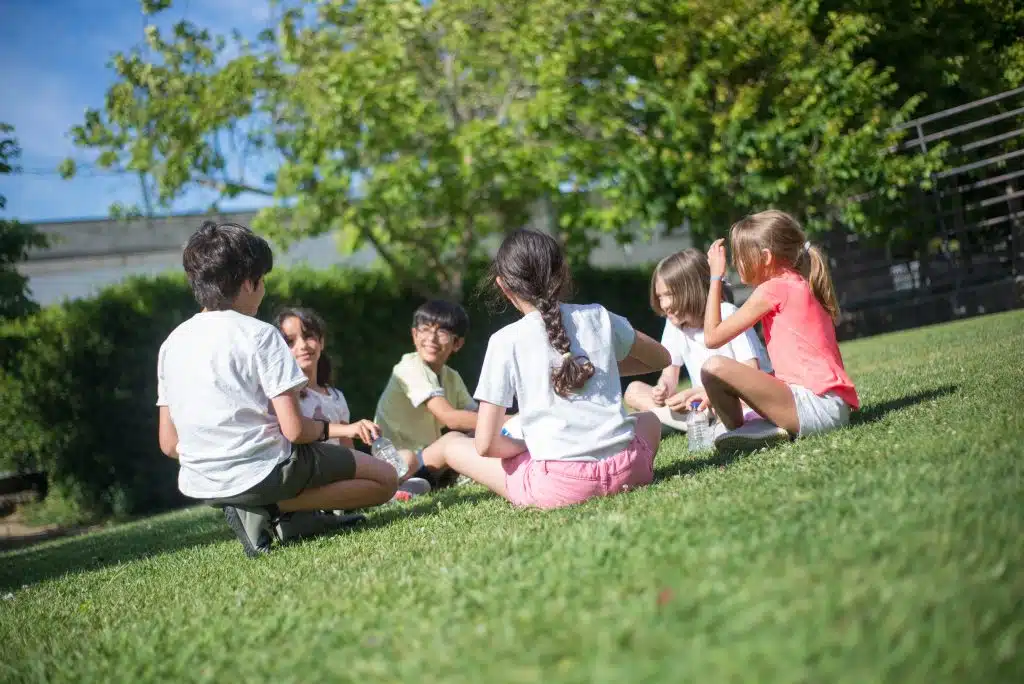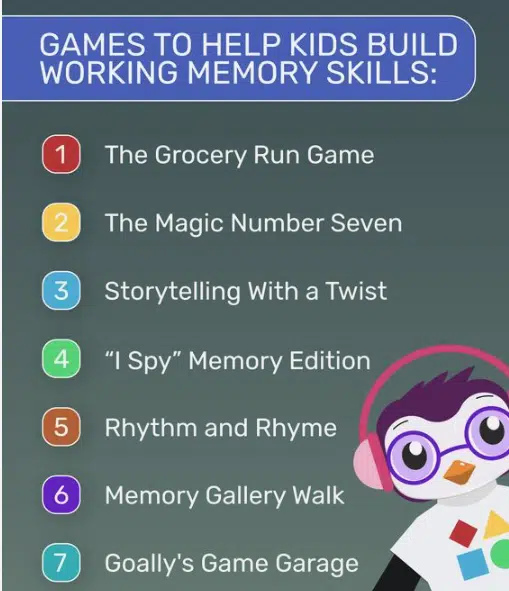Exciting news for parents everywhere! Scientists have discovered seven amazing working memory examples that can help kids with learning and thinking differences become memory masters. Did you know that playing fun memory games is just the beginning? These groundbreaking activities can make a huge difference in helping both neurodivergent and neurotypical children strengthen their brains and succeed in school and life.
Table of Contents
1. The Grocery Run Game
Let’s kick off with a practical and exciting activity: the “Grocery Run” game. How does it work?
- Help your kids create a shopping list and encourage them to memorize the items.
- Take a trip to the grocery store together and ask your child to remember the items on the list while shopping.
Not only will this activity enhance memory skills, but it also makes running errands more enjoyable for both of you. Additionally, you can increase the challenge by creating longer or more complex shopping lists. Compiling lists with categories or similar sounding items can push your child to focus their memory and think strategically.
2. The Magic Number Seven
An interesting fact is that the human brain can typically remember around seven items at a time. To capitalize on this limitation, we introduce memory challenges that revolve around this magic number!
- Present your child with seven objects or read aloud seven numbers.
- Give them a moment to memorize the items.
- Ask them to recall the objects or numbers in the correct order, or even in reverse.
SPONSORED BY: Goally
Goally’s Kid’s Tablet has one of the largest libraries of skill-building videos (like “How to Share” and “What To Do When You’re Lost”) in the Goal Mine app.👇
Sponsored by: Goally
"Goally has changed our lives. I no longer nag our son nonstop to complete basic tasks like getting ready for bed or cleaning his room!" — Bryna, Goally Mom Learn more →
Adapt the difficulty by varying the number of items depending on your child’s memory abilities. Besides, you can also choose different categories or ask your child for specific details about the objects to challenge their memory further.
3. Storytelling With a Twist
No doubt, storytelling is captivating, and it’s one of our favorite working memory examples. But, let’s spice things up by adding a twist. Follow these steps:
- Read a short story together.
- Stop reading halfway and ask your child to remember key story elements or details.
- Continue the story, then quiz them about specific aspects at the end.
This exercise keeps kids fully engaged and helps them develop better concentration and retention skills. Moreover, making the story quirky or surprising can create opportunities for fascinating conversations and reflection on memory techniques.

Read more: Memory Games for Kids
4. “I Spy” Memory Edition
We all love a good game of “I Spy”! Transform this classic into a memory exercise like so:
- Select an area with various objects or images.
- Have your child study the area for a minute or two.
- Remove or change one object/image, then ask them to identify the alteration.
This game is perfect for visual learners eager to show off their observational skills. Furthermore, challenging your child to describe the differences in detail can push their memory capabilities even further!
5. Rhythm and Rhyme
Music, rhythm, and rhyming words are excellent tools for boosting memory. Use these steps to create a melodious memory activity:
- Construct a simple melody or rhythm pattern, such as clapping hands or tapping on objects.
- Ask your child to carefully listen and then reproduce the pattern.
- Add variations or complexity to level up the challenge.
This activity supports auditory memory development and encourages creativity in producing their own “rhythm and rhyme.” They can come up with their own memorable tunes, making the process highly engaging.

6. Memory Gallery Walk
Embark on a memory-enhancing journey through your home together! Visit different rooms, talking about the objects found in each space. After your tour, ask your child to remember and describe the items in every room. This game necessitates concentration and memory recall while fostering a deeper connection with their surroundings. What is Working Memory and How Does it Apply to Autism?
7. Simon Says, “Boost Your Memory!”
Last but not least, the timeless game of Simon Says serves as one of the most engaging working memory examples. Guide your child through a series of actions they must recall and repeat, strengthening focus and memory through movement and repetition.
Goally | Fun Games that Build Motor Skills & Manage Screen Time
Looking for ways to improve your child’s finger dexterity skills while also keeping screen time manageable? Try Goally’s skill building tablet for kids— it has a bunch of fun & motor planning games!
Our “Balloons” & Graffiti Street Apps are all about building motor skills in a fun, interactive way. Kids learn to “pop the balloons” or draw dozens of digital art designs while simultaneously developing the essential skills needed to use AAC and other communication tools. It’s a blast for them and a win for you!
You now have a treasure trove of working memory examples to explore with your children, whether neurotypical or neurodivergent. These activities cater to a range of preferences and skill levels, ensuring there’s something for everyone. By engaging in these memory-boosting exercises, you’ll be helping your kids develop vital skills and, best of all, creating lasting memories and bonding moments. Happy memory enhancing!
This post was originally published on 05/26/2023. It was updated on 05/08/2024.
Emily is a seasoned blog writer for Goally, leveraging her extensive background in child psychology and special education to provide valuable insights and resources for parents. Her commitment to understanding and addressing the unique needs of these children, combined with her expertise in educational strategies, makes her a credible and empathetic voice for families.








